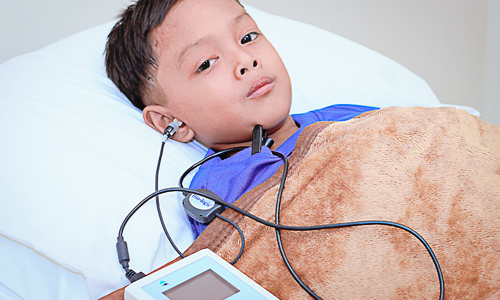Otoacoustic Emission (OAE) is a newborn baby screening that catches cochlea emission. Otoacoustic Emission (OAE) result can be used to:
- screen hearing (particularly in neonates, infants, or individuals with developmental disabilities)
- partially estimate hearing sensitivity within a limited range
- differentiate between the sensory and neural components of sensorineural hearing loss, and
- test for functional (feigned) hearing loss.
Otoacoustic Emission Procedure
A small earphone, or probe, is placed in the baby’s ear. The probe puts sounds into the baby’s ear and measures the sounds that come back. The doctor doing the test can see the results on the monitor screen without the baby or patient say anything while being examined. If a baby passes an OAE test and does not have a risk factor, a further hearing diagnosis will be done between the ages of 1-3 years. If the OAE result indicates deaf nerves, the patient should receive hearing rehabilitation as early as possible using a hearing assistance device no later than the age of 6 months or have a cochlear implant.

